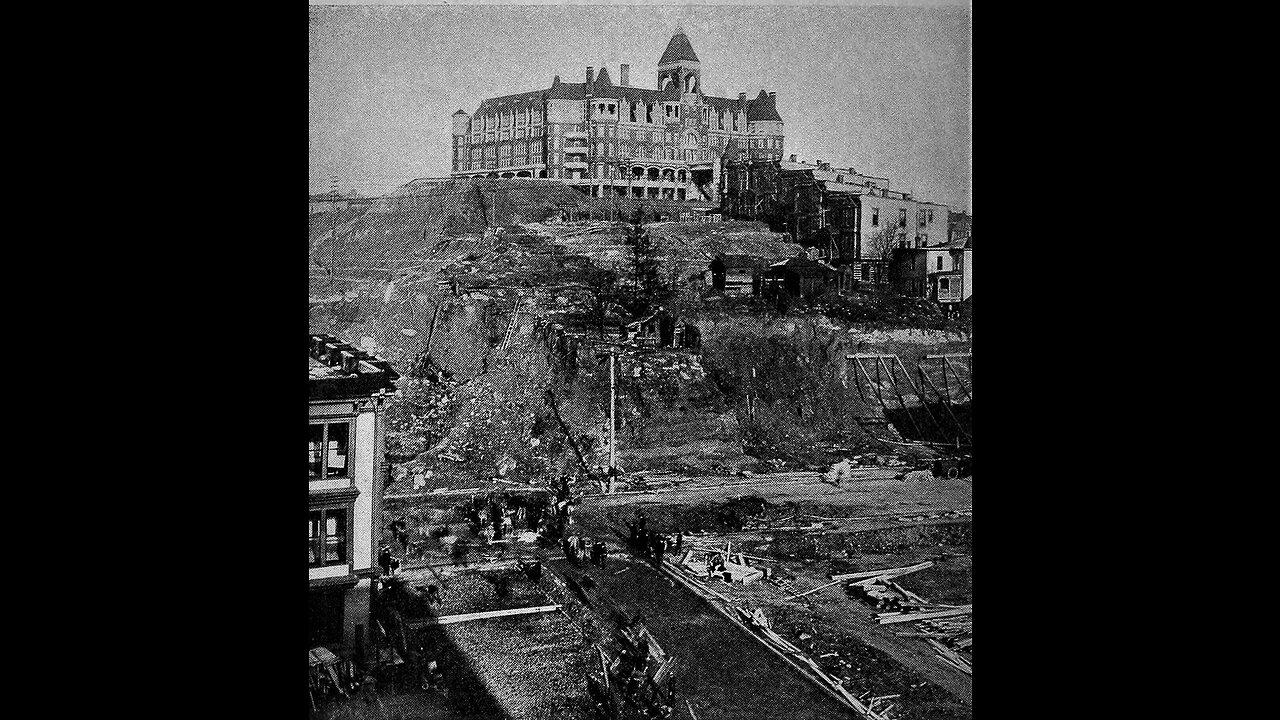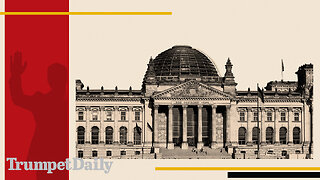Premium Only Content

Seattle's Russian Architecture (only 3000 inhabitants)
Our tour guide, Jim, warms up to the tale of Seattle’s first indoor toilets, the gleefully lame jokes come faster than the sewage that once streamed toward Elliott Bay through the city’s lone wooden sewer pipe.
“We ordered a whole shipload of crappers,” he exclaims. “I can tell these jokes are tanking. I’ll plunge ahead.”
Amiable and animated, Jim sports a khaki baseball cap and looks born to play the part of “neighbor dad” in any number of network sitcoms. Instead he’s about to spin a 70-minute yarn of Pioneer Square’s early days for the Canadians, North Carolinians, and other visitors who bought tickets for Bill Speidel’s Underground Tour. The group listens as Jim details how some questionable early decisions (like founding a city upon sea-level mudflats) begat sinking streets and toilets that flushed, explosively, in reverse at high tide.
Finally it’s time to journey into the sealed-off remnants of Seattle’s original street level, filled in and built over after the Great Seattle Fire of 1889 gave us a chance to rectify those past engineering misdeeds. Our intrepid leader warns of low beams, slippery pathways, and more of his impending humor: “If you don’t like puns, it’s going to be a bumpy ride.”
Winston Churchill supposedly said history is written by the victors, but in Seattle, history is written by a midcentury journalist-turned-publicist with a fondness for corny wordplay and (literal) toilet humor. In the 1960s, Bill Speidel started leading public tours of the underground passageways. Like any adept storyteller, he spiced up his narrative with tales of drunk lumbermen and “houses of negotiated affection” where “seamstresses” raked in insane levels of income.
Speidel’s tours (and books) were a hit. They reminded the public that Seattle’s singular origin story was buried beneath this depreciated neighborhood, otherwise a prime candidate for the wrecking balls of the era’s urban renewal. More importantly, they secured public support to preserve Pioneer Square as a historic district.
Over the next 50 years, untold numbers of people took the tour, and Speidel’s colorful revisionist tales calcified into all there was to know about our oldest neighborhood. Local author and historian Robert Ketcherside calls it the “hookers and gold” narrative. But the truth, like Pioneer Square itself, contains far more. Sure, the logs that rolled down vice-addled Yesler Way helped coin the term skid row, but Ketcherside has researched plenty of unsung yet legitimate business conducted here, like an orthodox Jewish–run dry goods store. Just the tale of Donald Trump’s great-grandfather, Frederick, who arrived in Pioneer Square in 1891 as a barber, but became both a restaurant owner and naturalized U.S. citizen, gives us a lot to unpack.
MOHAI executive director Leonard Garfield points out that the neighborhood was home to Seattle’s first Chinatown, as well as an array of garment workshops that established the city as a maker of sturdy outdoor wear. In other words, some of those hardworking seamstresses were actually just seamstresses.
“In a way, Pioneer Square was the battlefield for who we were going to become as a city,” says Garfield. “We were so far removed from the rest of the country, we could be whatever we wanted to be.” Licentious behavior pushed against Victorian-era propriety; the same compact slice of city that once milled lumber became home to Smith Tower in 1914, then the tallest, most cosmopolitan skyscraper on the West Coast.
By the time Speidel started walking curious locals (and later, hordes of cruise ship passengers) through the city’s catacombs, Seattle was riding the Boeing boom and debating whether it was the sort of city that tears down old buildings to insert parking garages or, as Garfield puts it, “a place that looked toward its past for some sense of identity and a foundation to build on.”
That dilemma sure sounds familiar in an era when Pioneer Square’s recent influx of well-funded office workers coexist with the artistic element that flourished during the neighborhood’s years of neglect. It’s unlikely either group could look at the old-timey portraits of Seattle founding fathers that Seattle Underground guides use to kick off their tours and distinguish Arthur Denny from Henry Yesler. Hardly anyone can, Jim acknowledges to his audience. They’re old white dudes with beards, after all. “It’s the storytelling that brings them alive.”
Adventures in Time Capsules
Weird things can happen when you try to preserve stuff for people of the future.
1927 The University of Washington sealed a time capsule into its brand-new sports pavilion, never dreaming the tame contents (newspapers, a dime) would inspire boos at its opening in 1999.
1932 The Aurora Bridge dedication ceremony places a time capsule as a gift for Seattleites of 2032. However, SDOT doesn’t know where it is today.
1989 Olympia’s capitol rotunda receives a massive safe, designed to add a new time capsule every 25 years. All 16 will be opened on the state’s 500th birthday.
1991 The Fremont Troll once held a time capsule, inside the monster’s captive VW Bug, but vandals quickly spirited off with the contents, including a bust of Elvis Presley.
2001 Some 30 pounds of ferry swag was sealed into the clock at Coleman Dock, to be opened 50 years later.
2007 UW’s class of 1957 opens its 50-year time capsule to discover vandals had added 1970s porn and dirty underwear to the otherwise G-rated contents.
2017 Space Needle renovation crews unearthed a forgotten 1982 time capsule. Inside: an original sketch by Needle designer John Graham.
https://seattle.curbed.com/2019/1/3/18167234/seattle-waterfront-before-viaduct-photos
https://www.pinterest.com/pin/250512797992820021/
https://www.abandonedspaces.com/uncategorized/__trashed-2.html
https://spl.contentdm.oclc.org/digital/collection/p15015coll4/id/1222/
-
 DVR
DVR
WeAreChange
3 hours agoElon Musk & Donald Trump: The Emergency Halt That Saved Us
20.9K7 -
 LIVE
LIVE
Space Ice
5 hours agoSpace Ice & Redeye Try To Figure Out Seagal's Most Incoherent Movie
142 watching -
 1:00:36
1:00:36
PMG
19 hours ago $0.03 earned"Santa Trump is Giving Us Hope - But Will Johnson Stand Strong?"
5542 -
 54:30
54:30
LFA TV
23 hours agoThe German Strongman’s Arrival Is Imminent | Trumpet Daily 12.18.24 7PM EST
4.44K -
 2:04:11
2:04:11
Melonie Mac
3 hours agoGo Boom Live Ep 32! Soul Reaver Remastered!
9.28K1 -
 39:11
39:11
Sarah Westall
1 hour agoDigital Slavery and Playing with Fire: Money, Banking, and the Federal Reserve w/ Tom DiLorenzo
8.9K -
 LIVE
LIVE
2 MIKES LIVE
5 hours ago2 MIKES LIVE #157 ILLEGALS, PROTESTORS AND DRONES!
240 watching -
 1:01:03
1:01:03
LFA TV
23 hours agoTHE LATEST SPENDING BILL IS AN ABOMINATION! | UNGOVERNED 12.18.24 5pm EST
14.5K20 -
 1:43:34
1:43:34
Redacted News
5 hours agoBREAKING! WARMONGERS PUSHING TRUMP TO LAUNCH PRE-EMPTIVE WAR WITH IRAN | Redacted News
111K203 -
 1:00:26
1:00:26
Candace Show Podcast
4 hours agoPiers Morgan x Candace Owens | Candace Ep 123
59.6K175